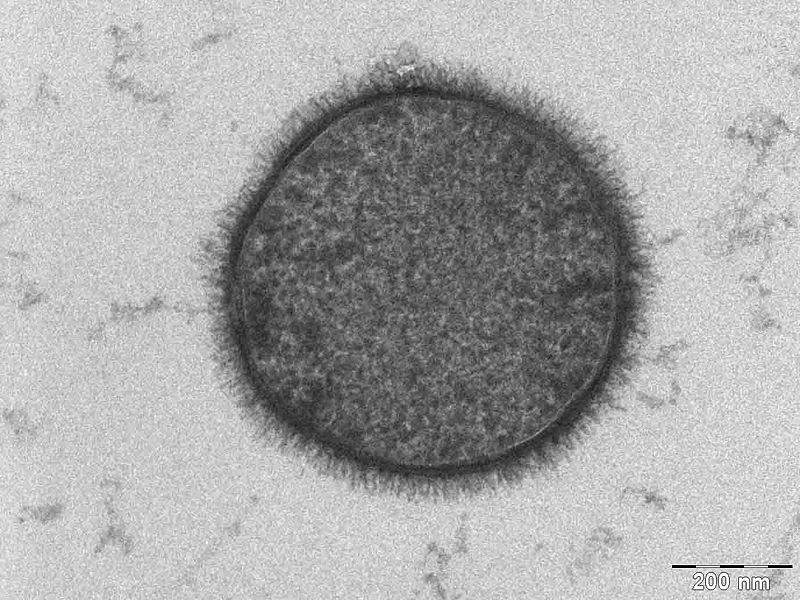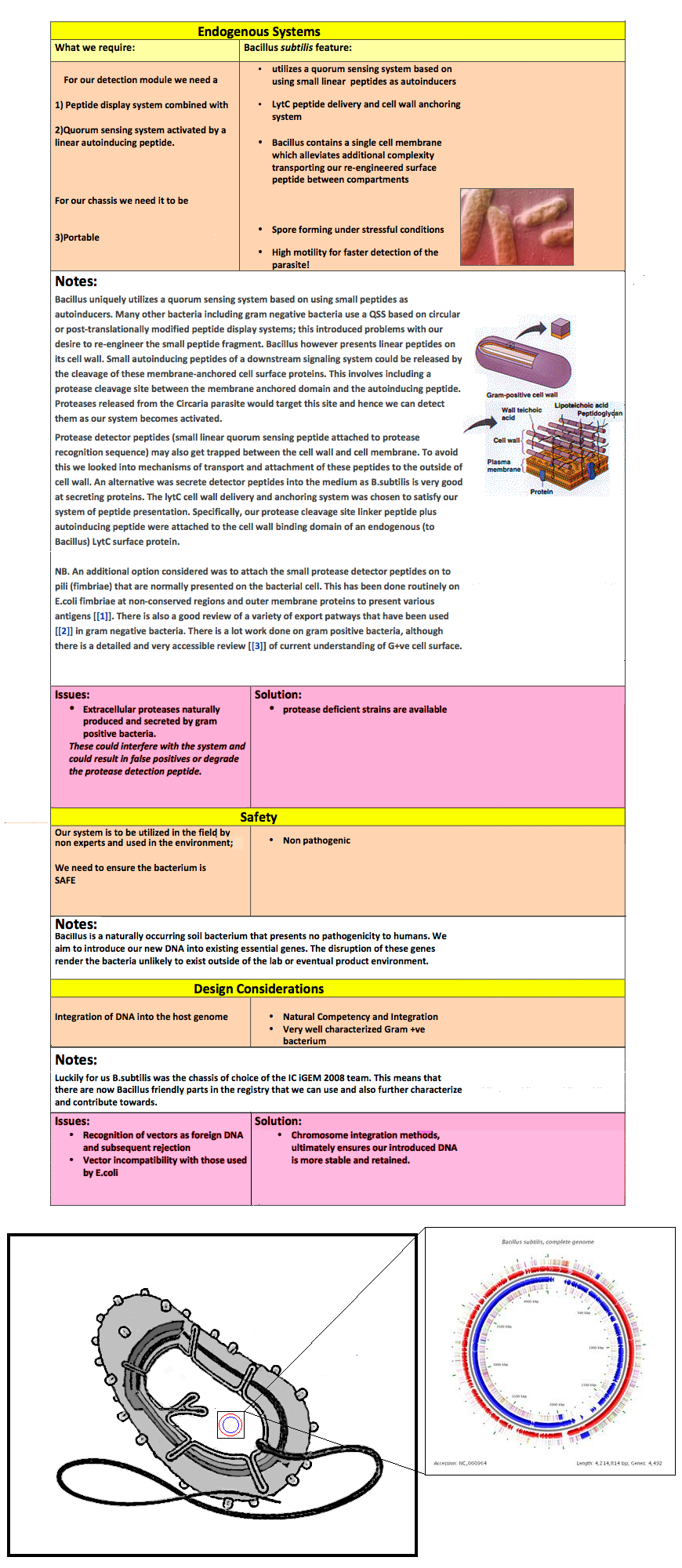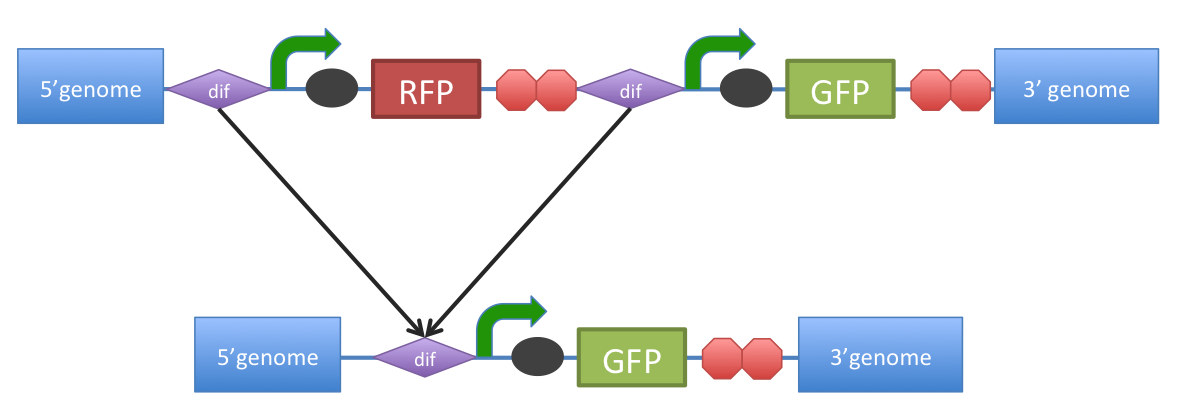Team:Imperial College London/Chassis
From 2010.igem.org
| Chassis |
|
Our choice of chassis was B. subtilis. Here we list the reasons why B. subtilis serves as a more appropriate chassis option with regards to our project design and main project specifications. To re-iterate the pertinent project specifications:
We selected B. subtilis because it is a well characterized gram positive bacterium that is non pathogenic. It was convenient but also a coincidence that within our chosen chassis were features with which we could manipulate to use in our detection module. Below is a brief table summary of how Bacillus meets our system requirements and also some of the issues we encountered throughout the implementation process and how we overcame them. |
| Bacillus | Breakdown |
|
B. subtilis dif: sequence-specific recombinase recognition siteIn cells with circular chromosomes, recombinatorial repair and homologous recombination can generate multimeric chromosomes 1. ‘’Dif’’ sites are part of a system to ensure that multimeric chromosomes can be separated to monomers, which is required for proper sharing of genetic material between daughter cells. In ‘’B. subtilis’’ the tyrosine family recombinases such as RipX and CodV mediate the separation at 28-bp sequence Bs’’dif’’ 1. The site-specific recombinases are able to recognize two directly repeated ’’dif’’ sites and excise the fragment flanked by the two sites 2.
Figure 1. Removal of a specific gene from a genome integrated construct.The site-specific recombinases, endogenous to ‘’B. subtilis’’ strains are able to recognise Bs’’dif’’ sites and recombine out the strand of DNA directly flanked by the two sites. Recombination leaves a single dif site. The construct was previously engineered to homologously recobine into the genome of ‘’B. subtilis’’. Integration sequences such as amyE <bbpart>BBa_K143001</bbpart>, <bbpart>BBa_K143002</bbpart> can be used to achieve this.
Sequence and Features <partinfo>BBa_K316002 SequenceAndFeatures</partinfo>
References
E.coli was considered as a possible option. Despite the gram negative outer membrane, there are strains that have been made more permeable through knockout of Lipid A biosynthesis in lipopolysaccharides [4] There are also proteins that can disrupt membranes when they are inserted in them, thus making them more permeable. These chages in permeability are likely due to transient ruptures of outer membrane and so unlikely to make a very responsive or robust detecton organism [4]. |
| References |
|
Surplus information on B. Subtilis chassis [http://www.subtiwiki.uni-goettingen.de/wiki/index.php/Main_Page Subti-Wiki] [http://mic.sgmjournals.org/cgi/content/full/146/12/3025 1] [http://www.microbialcellfactories.com/content/5/1/22 2] [http://www3.interscience.wiley.com/cgi-bin/fulltext/118603263/PDFSTART 3] [http://aac.asm.org/cgi/content/full/43/6/1459?view=long&pmid=10348770 4] |
 "
"






